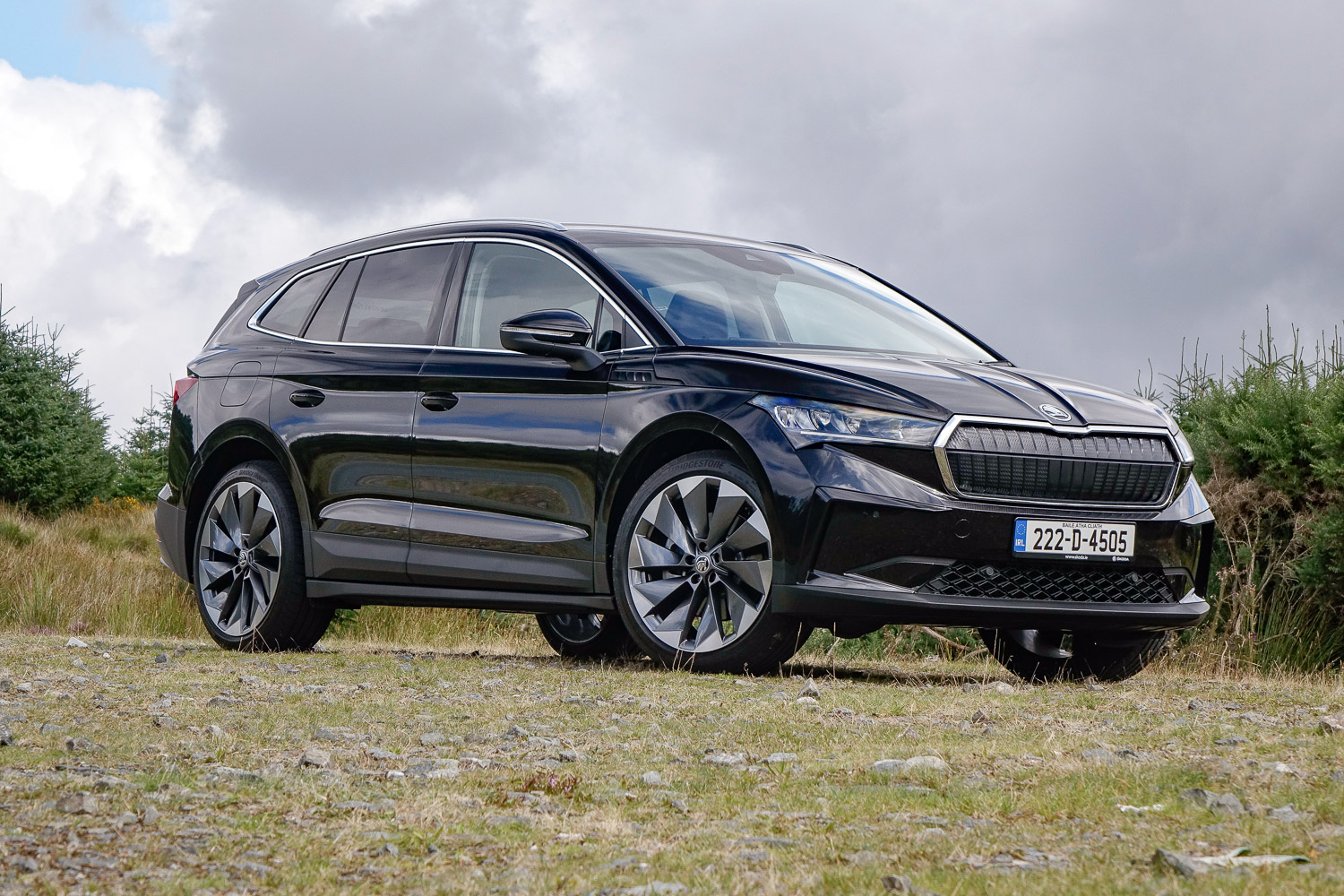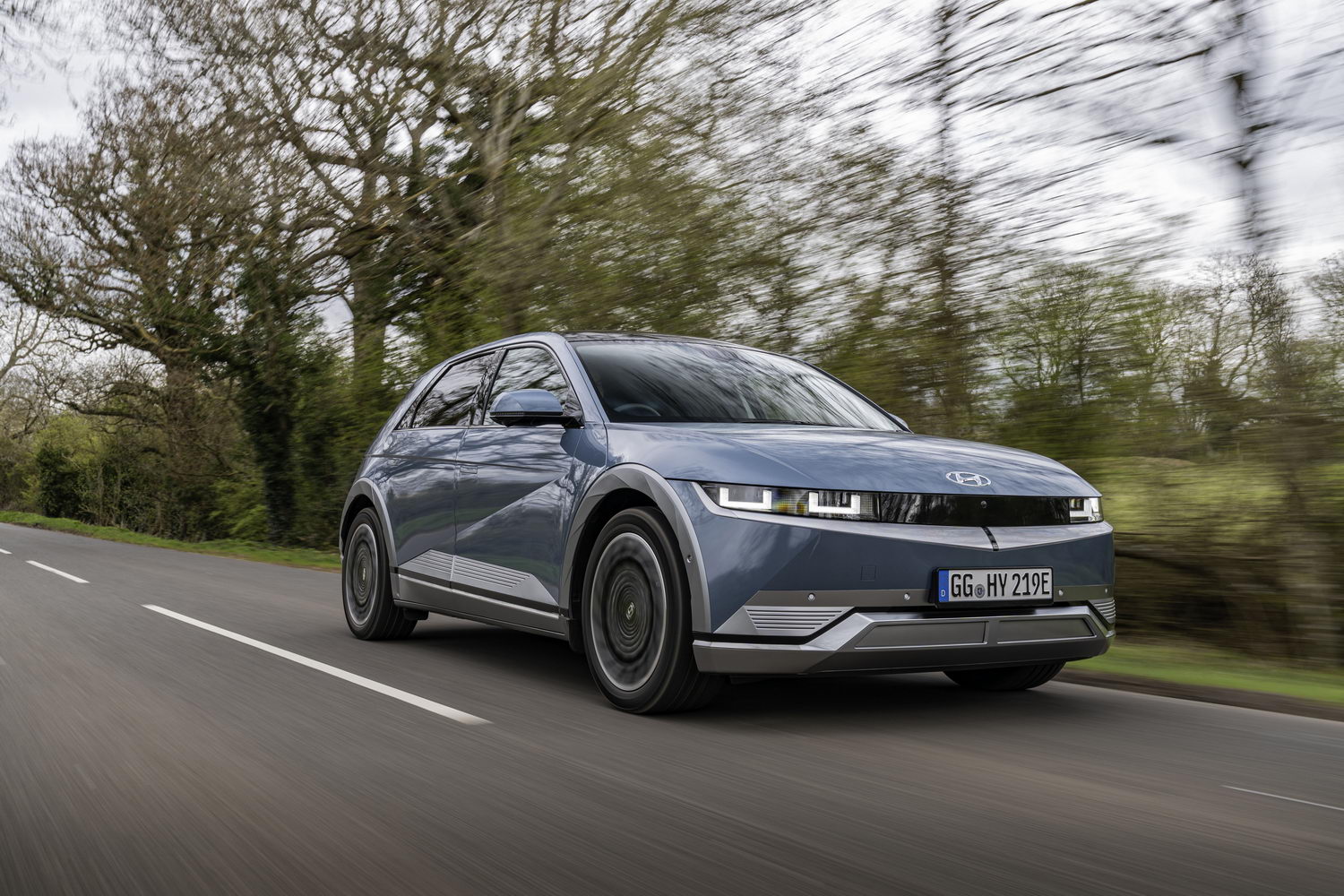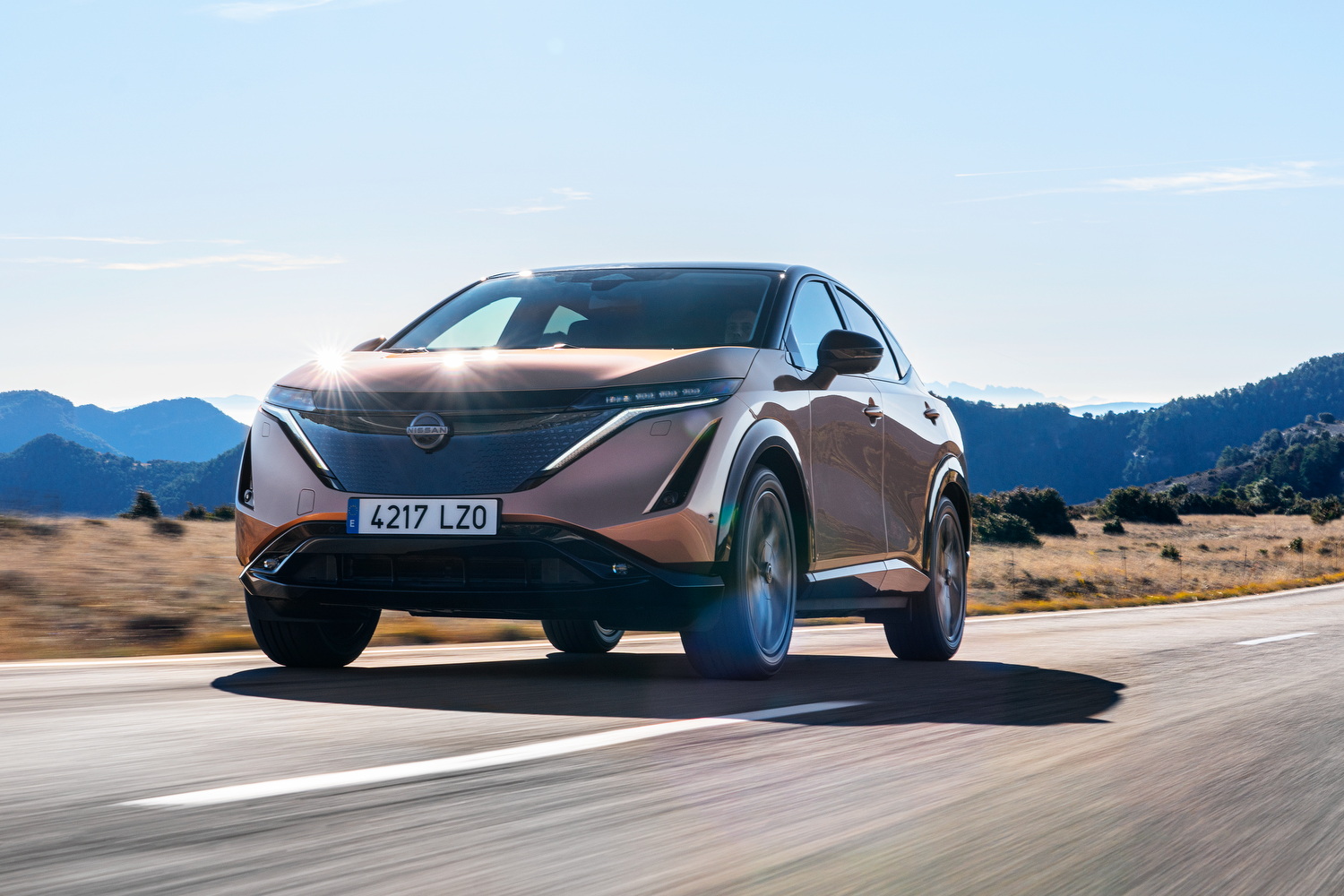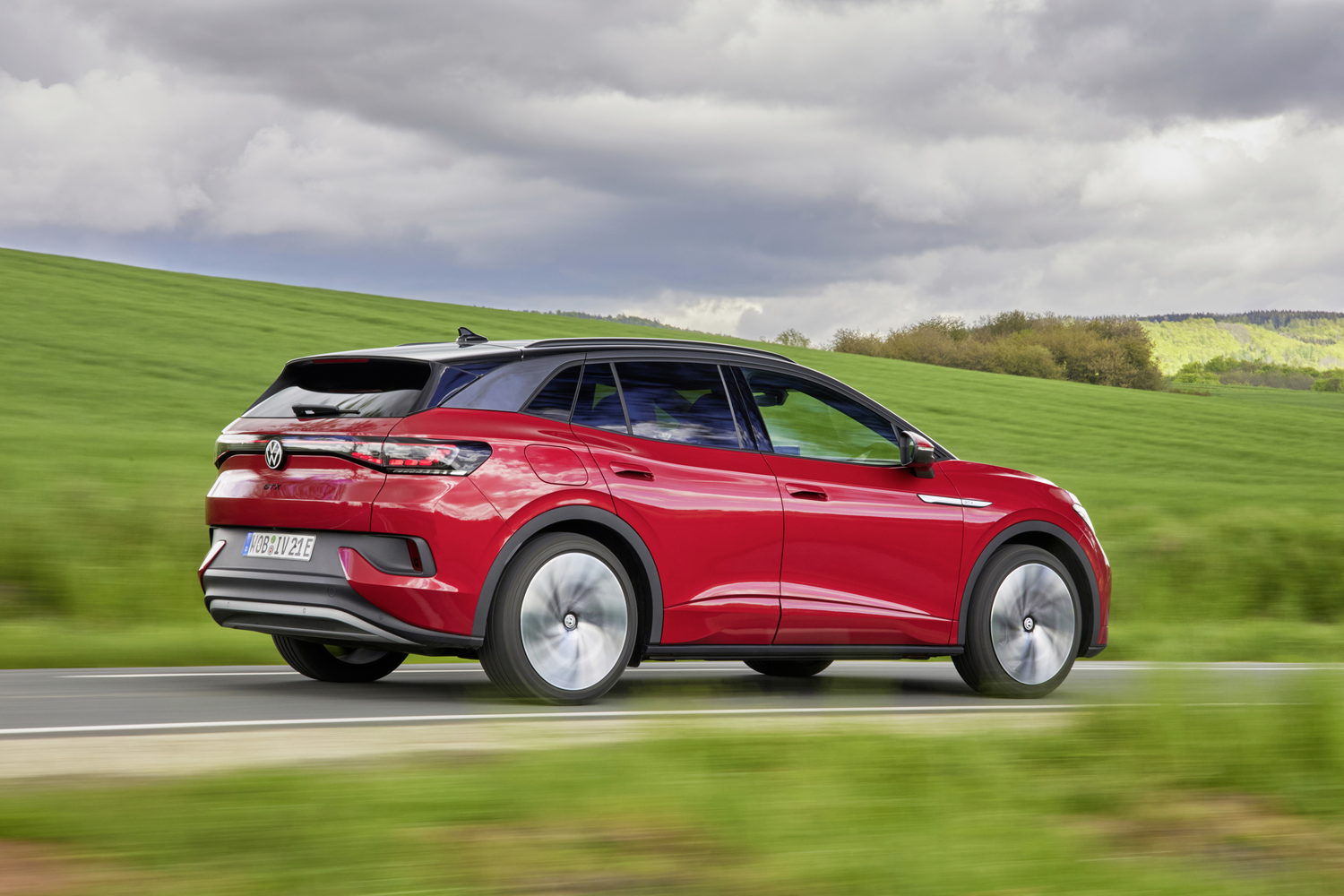Skoda Enyaq overview
I wouldn't have predicted that the Skoda Enyaq would be comprehensively outsold by its close cousin, the Volkswagen ID.4. At the time of writing, more than 1,800 ID.4s had been sold in Ireland so far this year, compared to just 355 Enyaqs. It's just a personal hunch, but I wonder if VW is prioritising its shortened supply of microchips for the ID.4 and leaving the Enyaq ever so slightly out in the cold. Many manufacturers are, after all, having to make such difficult choices at the moment. Or maybe VW is just annoyed at Skoda for making a nicer car. Probably not, but you never know...
I mean, it's not THAT much better - the ID.4 and the Enyaq are identical under the skin after all - but the Enyaq has a nicer cabin and, to these eyes, it's the better-looking car on the outside too. It's also slightly the more practical, as befits Skoda's utilitarian image.
The Enyaq range is slowly starting to expand a little now. Having started off with just the one 204hp, rear-drive model it has grown to encompass the chopped-back 'coupe' version (which hasn't gone on sale in Ireland yet), a sporty 299hp RS model (ditto), and a four-wheel-drive 80x version, which is the one we're testing here. Compared to the standard 204hp rear-drive Enyaq, this 80x model gains an extra electric motor - driving the front wheels - and an extra 61hp too, not to mention more torque.
Does that turn the Enyaq into a very different car? Well, it certainly makes it more expensive, so the question here is does the extra traction and performance justify the 80x's higher price tag?
The Skoda Enyaq model range
The cheapest Enyaq on Irish price lists is the 60kWh (58kWh net) version, the number referring to the capacity of its battery. That comes with a 150hp electric motor driving the rear wheels, and a maximum range of 412km on one charge. Precious few buyers actually go for this model, in spite of its tempting €39,493 basic price (including both the SEAI's €5,000 grant and the VRT relief of €2,857 assuming you don't add any options, but also including the extra €2,000 that Skoda adds on for the Enyaq's 'tyre and maintenance' plan).
More buyers go for the pricier, but more useable, 80kWh version (77kWh net battery capacity), which gets a potential 534km range and costs from €47,849 (including the SEAI grant, €1,461 VRT relief and the €2,000 tyre plan). For €51,286 (including SEAI grant, €394 VRT relief and the tyre plan) you can have the basic four-wheel-drive 80x model.
The Enyaq 60 standard equipment list includes autonomous emergency braking with pedestrian detection, dual-zone climate control, cruise control with speed limiter, keyless ignition, rear parking sensors, rain sensing wipers, dusk-sensing headlights, self-dimming rear-view mirror, a 13-inch infotainment screen, Apple CarPlay and Android Auto wireless connection, 19-inch alloy wheels, LED headlights, black roof rails, fabric and leatherette seats and LED ambient lighting.
To that, 80 and four-wheel-drive 80x add smarter 19-inch alloys, recharging speeds of up to 135kW, rear parking camera, front parking sensors, more exterior chrome, a heated two-spoke steering wheel, paddles behind the wheel that set your brake energy recuperation levels and selectable driving modes.
The only other trim grade in the Enyaq line-up for now is Sportline. This comes with 20-inch 'Vega' alloy wheels, Matrix LED headlights with washers, a sports body kit with blacked-out chrome and black badges, full keyless entry and ignition, tinted privacy glass, sound-deadening acoustic film for the side windows, driver attention alert, wireless phone charging, leather and synthetic suede upholstery, high-backed front sports seats, leatherette cover for the dashboard, carbon-look trim inserts, aluminium pedals, a heated three-spoke steering wheel and a sportier steering setup.
You can have an Enyaq 60 in Sportline trim with a 409km range for €46,334 (including the SEAI grant, €1,931 VRT relief and the tyre plan), as an Enyaq 80 with a 525km range for €53,525 (which gets no VRT relief but does get the SEAI grant and the tyre plan) and, as tested here, as an 80X with a 488km range for €55,720 (again, no VRT relief but you do get the SEAI grant and that price includes the €2,000 tyre plan).
Our 80x Sportline test car also came with optional 21-inch 'Betria' wheels (which cost €788); the driver assistance pack (which includes radar-guided cruise control, a blind spot monitor and traffic-jam assistance for €1,182) and the 'Crystal Face' backlit grille, which adds €718 to the price and is either dreadfully tacky or wonderfully tacky, depending on your personal taste.
Skoda Ireland currently offers the Enyaq with a 4.9 per cent APR PCP finance plan, which assumes a €12,907 deposit, a €21,722 final payment and €349 monthly payments over three years. Check out the Skoda Ireland website for up-to-date offers.
The Skoda Enyaq Sportline interior
For my money, the Enyaq's interior is its trump card when it comes to comparisons between it, the VW ID.4 and the Audi Q4 e-tron. Skoda often produces nicer cabins than its supposedly more upmarket Volkswagen Group cousins (just check out the current Fabia's interior compared to the Polo and the A1) and the Enyaq is no exception. While the Sportline model is pricey enough in 80x form to make you involuntarily wince, it does underline the essential niceness of the Enyaq's cabin.
First up, there's the seats - high-backed buckets that are supremely comfortable. It's hard to imagine any driver of any shape feeling uncomfortable after a long journey in one of these, and there's lots of adjustment to be found in both the seat and the steering wheel.
Behind that wheel, and slightly buried in the dashboard, is the small main instrument screen, which, in this car, was augmented by a very good head-up display projected onto the windscreen. Actually, it's in the display that we find the only demerit for the Enyaq's cabin, relative to the ID.4. There's nothing wrong with the screen itself, as it's identical in its display to the VW's, but by burying it in a little tunnel in the dash Skoda loses the VW's sensible drive selector arrangement. Instead of a switch that you can reach with your finger and thumb behind the steering wheel, Skoda has to use a little lozenge-shaped switch down on the centre console, which just seems like a less elegant solution.
Still, there's plenty of storage space on that centre console, with a large storage tray to the side of the gear selector, big cupholders and an angled, rubberised tray ahead of those that keeps your mobile phone held firmly in place. There's more storage under the centre armrest and big door bins, too. Above the mobile phone tray there is a pair of USB-C sockets, and you'll find two more in the back seats. Above those there are some physical short-cut buttons for the big 13-inch infotainment screen.
These are a major help as Skoda has migrated essentially all of the major controls onto the screen, and as with its VW and Audi cousins it's only a partial success. The menu layout is at least a little more easily explicable than you'll find in the VW or in the related Cupra Born, but it's still way too fiddly and difficult to learn. At least Skoda dispenses with the awkward 'slider' touch-sensitive controls for the heating, and just puts all of the air conditioning controls on the screen. It's still not as satisfying as proper physical controls (and way more distracting when you're driving), but it's better than the sliders.
Quality levels are excellent, although we did notice some uneven stitching on the leatherette dashboard, which is a small disappointment at this price level.
In the back, space is excellent, although, as with most flat-floor EV models, your knees sit up a big higher than is ideal for long journeys. There's enough space to fit an adult in the centre rear seat, but the back-seat armrest makes that a bit lumpier and less comfy than the outer two seats. Those outer seats get ISOFIX child seat anchors as you'd expect.
In the boot, there's a whopping 585 litres of space to play with, which should be enough for most purposes. Skoda adds in some Velcro boot dividers, which can hold bigger bags and boxes in place, as well as handy storage bins at either side of the boot, luggage hooks and tie-down points. There is a bit of a loading lip, but it's not too bad and there is some underfloor storage for charging cables, which is good as there's no front-boot for those.
The Skoda Enyaq Sportline driving experience
Right, this being a Sportline model you'll be expecting rib-crushing acceleration. Well, sorry to disappoint but that's not what you'll find here. Indeed, the Enyaq 80x's 265hp and 425Nm of torque kind of get lost in its chunky 2.1-tonne kerb weight. Now, that's not the heaviest EV kerb weight around, not by any means, but it does seem to blunt the performance feeling. Step-off power is entertainingly brisk, but keep your foot down hard and the Enyaq 80x just doesn't seem to gather speed all that much more quickly than a standard 204hp model. On paper, there is almost a two-second gap between the two models for the 0-100km/h run, but subjectively it's hard to feel that there's much benefit.
Of course, the real benefit here is four-wheel drive, and while dry and sunny conditions during our test drive didn't give us much of a chance to deploy that talent, in the winter and on unmade roads there would be some use in it. Mind you, given that we've driven a rear-drive Enyaq 80 in wet, slippery conditions and not noticed any major problems, you'd have to ask yourself whether the chances of a couple of weeks of icy conditions in the winter is really worth the extra outlay. Winter tyres would probably represent a better purchase in that case.
The four-wheel drive and extra weight also blunt the range. Now, 488km is not to be sniffed at as a one-charge range, and we were pretty easily getting 440km out of the Enyaq 80x on a single charge, which is good, but it's hard not to be seduced by the extra range of the rear-drive 80, as it certainly has a handy extra buffer of around 40km that can make a huge difference. For reference, though, I was easily able to complete my regular Dublin-Belfast motorway run and still have slightly more than 50 per cent battery capacity remaining.
In corners, the Enyaq 80x also somewhat belies its sporty billing. The 'Progressive Steering' setup has nice weight and good accuracy, but ultimately the weight doesn't help here, making the Enyaq 80x feel rather more stodgy than sporty. Again, it feels far more like the regular 80 model to drive than is possibly healthy for it - not that this is inherently a bad thing, as like the 80 it's smooth and comfortable (even on the optional 21-inch rims) and refined. Honestly, you'd need a Rolls-Royce to materially better the cabin quietness.
Our verdict on the Skoda Enyaq iV 80x Sportline
In many ways, this is a misfire for Skoda. In this specific form, at this specific price, the Enyaq 80x just doesn't do enough to justify its extra costs over the standard, longer-ranged, rear-wheel-drive model. Perhaps a non-Sportline 80x does, but the extra trinkets of Sportline trim just add too much to the bottom line. Then again, one needs to put this in perspective - considering just how nice (albeit not at all sporty) this Enyaq 80x is to drive, how good it is to look at, how good its interior is and how refined it is, we'd bet most car companies would wish that their misfires were this good.
What do the rest of the team think?
I tested a slightly different version of the 80x to the one Neil describes - the black non-Sportline model pictured, sitting on optional 21-inch rims and featuring the gorgeous (and pricey) Cognac brown leather upholstery. It's a classy looking car and hugely practical. I also prefer its interior to that of the ID.4, though I reckon the ID.4 has it licked in terms of driving dynamics. That judgement may have something to do with the compromised ride comfort of this car because of the large wheels, admittedly. It does show that you don't need to shell out on the Sportline specification to get a more attractive Enyaq, however, even if it does come with compromises. And as for the 80x four-wheel-drive system, it's only worth the upgrade if you need to regularly tow loads in slippery conditions or you value all-wheel drive for other reasons.
Shane O' Donoghue - Editor



























